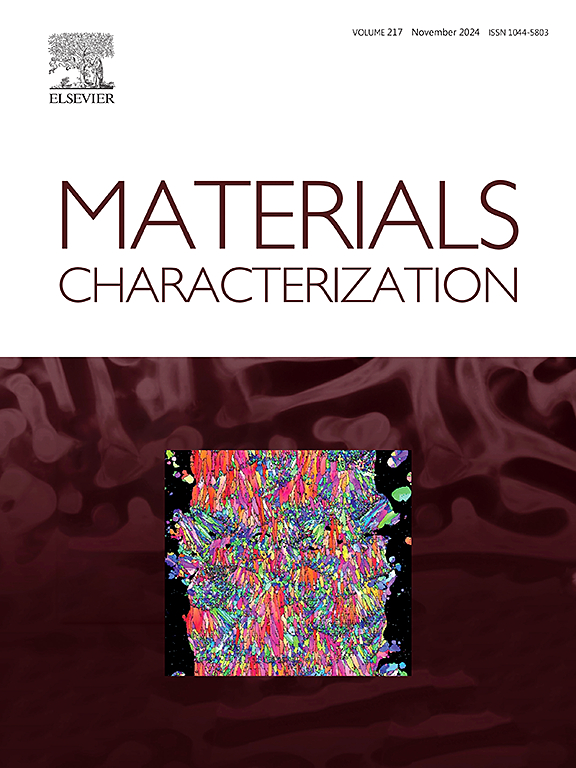hip -制备TiB/(TA15-Si)复合材料高温蠕变行为及显微组织特征
IF 4.8
2区 材料科学
Q1 MATERIALS SCIENCE, CHARACTERIZATION & TESTING
引用次数: 0
摘要
研究了热等静压(HIP)制备的3.5 vol% TiB/(Ti-6.5Al-2Zr-Mo-V-0.3Si)复合材料的蠕变行为。在原位合成TiB晶须和沉积硅化物的过程中观察到hip -加工复合材料。为了表征其高温性能,在650°C、700°C和750°C的不同施加应力下进行了蠕变试验。结果表明,在650℃、700℃和750℃时,蠕变应力指数分别为4.79、4.96和5.11。相应的阈值应力分别为31.5 MPa、16.3 MPa和8.5 MPa。分析了蠕变后的显微组织。蠕变破裂主要发生在钛基体内部和TiB聚集的先前颗粒边界(PPBs)处。在蠕变过程中,硅化物变粗,而较小尺寸的硅化物在钉钉位错中表现出更好的效果。TiB晶须起骨架作用,阻碍了TA15基体的软化变形,并观察到位错堆积引起的TiB断裂。本文章由计算机程序翻译,如有差异,请以英文原文为准。
High-temperature creep behaviors and microstructure characteristics of HIP-manufactured TiB/(TA15-Si) composites
This study investigated the creep behavior of hot isostatic pressing (HIP) manufactured 3.5 vol% TiB/(Ti-6.5Al-2Zr-Mo-V-0.3Si) composites. In-situ synthesized TiB whiskers and precipitated silicides were observed in the HIP-processed composite. To characterize its high-temperature performance, creep tests were conducted at 650 °C, 700 °C, and 750 °C at various applied stresses. The results revealed creep stress exponents of 4.79, 4.96, and 5.11 at 650 °C, 700 °C, and 750 °C, respectively. Corresponding threshold stresses were estimated as 31.5 MPa, 16.3 MPa, and 8.5 MPa. The post-creep microstructure was analyzed. It was found that creep cavities formed within the titanium matrix and at prior particle boundaries (PPBs) where TiB agglomerated, with creep rupture primarily occurring at the PPBs. Silicides coarsened during creep exposure, while smaller-sized silicides exhibited superior effectiveness in pinning dislocations. TiB whiskers acted as a skeleton, hindering the softening deformation of the TA15 matrix, and the fracture of TiB induced by dislocation pile-up was also observed.
求助全文
通过发布文献求助,成功后即可免费获取论文全文。
去求助
来源期刊

Materials Characterization
工程技术-材料科学:表征与测试
CiteScore
7.60
自引率
8.50%
发文量
746
审稿时长
36 days
期刊介绍:
Materials Characterization features original articles and state-of-the-art reviews on theoretical and practical aspects of the structure and behaviour of materials.
The Journal focuses on all characterization techniques, including all forms of microscopy (light, electron, acoustic, etc.,) and analysis (especially microanalysis and surface analytical techniques). Developments in both this wide range of techniques and their application to the quantification of the microstructure of materials are essential facets of the Journal.
The Journal provides the Materials Scientist/Engineer with up-to-date information on many types of materials with an underlying theme of explaining the behavior of materials using novel approaches. Materials covered by the journal include:
Metals & Alloys
Ceramics
Nanomaterials
Biomedical materials
Optical materials
Composites
Natural Materials.
 求助内容:
求助内容: 应助结果提醒方式:
应助结果提醒方式:


